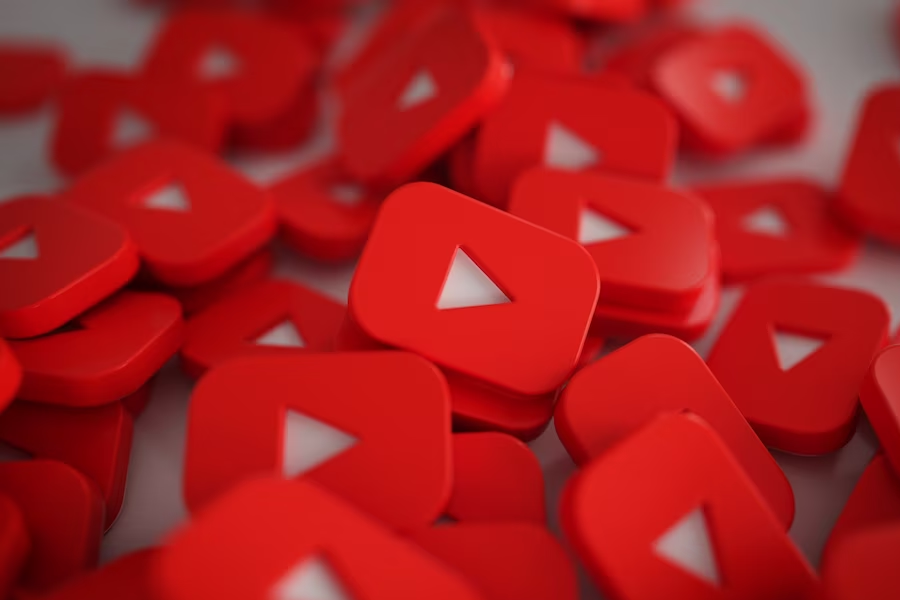
Creating a YouTube account for your business is simple enough – it’s the other things that are challenging, like drawing in an audience. Yet, considering the success many businesses have had with YouTube optimization, it’s clear: you can do it too!
There’s no need to wrestle with it alone. With our step-by-step YouTube SEO guide, you’ll learn proven strategies and techniques to enhance your YouTube video’s ranking effortlessly.
Unlock the full potential of your channel by reading our hands-on tips below.
Why Optimize Your YouTube for Business
Who doesn’t know about YouTube? It is a very popular online platform where everyone can view, share, and upload videos for literally any kind of content. It’s the second-largest search engine globally.
This website is a really powerful tool for business owners. Utilizing YouTube will help your business achieve cost-effective video marketing and sales goals. The next section will discuss the specifics of how YouTube video SEO will boost your business.
The benefits of YouTube SEO
The primary context of YouTube is search. Users will look for various topics and will likely view those videos listed at the top. YouTube rankings are the position of videos in the YouTube search results page.
Still, YouTube is not only search engine focused – it’s also a social platform. You would want your videos ranking on top to gain more views, get more comments, and attract more potential customers.
If you have a good YouTube SEO strategy, you’ll reap the following advantages:
- Achieve global reach: Since so many people (billions!) are using YouTube worldwide, you have the opportunity to reach a vast and diverse audience. You can connect with potential customers – whether you’re a small local business or an international corporation.
- Encourage visual engagement: People effectively learn more by watching videos than by reading text or seeing images alone. With YouTube, you create and share compelling video content that showcases your offerings in a more personal way.
- Reap SEO (search engine optimization) benefits: Optimizing YouTube videos with relevant keywords, titles, video descriptions, and tags can improve your visibility on both YouTube and Google search results (since YouTube is owned by Google).
There have been countless companies that have used YouTube for success. An example of this would be GoPro – an American technology company of action cameras.
GoPro has effectively showcased the capabilities of its cameras through this platform. They used YouTube to encourage their fans to post impressive and captivating feats, leading to massive engagement. Today, they have approximately 11 million subscribers and over 2 billion total views.

How To Conduct Keyword Research for YouTube
Keyword research is the process of finding and analyzing the words and phrases people type into search engines.
This is an important aspect of video marketing that helps you understand what your target audience is searching for online. In this section, we’re going to discuss how to conduct your target keyword research to boost your YouTube performance.
Step 1: Generate a list of keyword ideas
The first step is creating a list of the possible keywords that your audience is searching for.
Here are five different ways for you to do this step:
- Brainstorm with your team: Jot down key topics, themes, and questions related to your channel’s focus.
- Use YouTube Search Suggest or Autocomplete feature: Type in the words of your niche in YouTube’s search bar. YouTube algorithm will give you multiple videos as recommendations, which shows you a bunch of popular keywords related to what you typed in.
- Copy optimized keywords from popular videos: Go to various YouTube channels related to your video category, and sort their videos by “Most Popular”. See which keywords these popular videos are optimized around in the titles, YouTube descriptions, and video tags.
- Explore related searches: Go to the bottom of the YouTube search results page. You will find the “Related Searches” section. Add any relevant video keywords to your list.
- Utilize other YouTube SEO tools: You can use keyword research tools like vidIQ Vision, or Tube Buddy. You can also use the same keyword research tools as you would with blogs, such as SEMrush, Ahrefs, or TubeBuddy to discover more keyword ideas. Enter your brainstormed topics or keywords in the said tools. It will generate a list of related keywords, along with metrics such as search volume and competition level.
This will give you a broad, general list to work with. But this isn’t the end.
Creating your list of keywords is important, but it’s just the first step. After generating a list of keywords relevant to your niche, it is time to choose which keywords are the best for you.
Step 2: Find the best keywords from your list
How do you know what the best keywords are? This involves understanding your audience, analyzing search trends, and assessing competition.
Here is how to proceed:
- Evaluate relevance. You’ll likely evaluate the keywords based on relevance first. Ensure that the keywords are directly related to the topic of your content so it fulfills the user’s search intent.
- Analyze important metrics. Utilize YouTube Analytics to look at numbers like search volume and competition, then strike a balance between them. Aim for keywords with a decent search volume while considering the level of competition.
- Conduct social listening. Monitor social media platforms for discussions and trends related to your niche. This gives you more information as to what keywords to prioritize, and which ones to discard. Also, balance trending topics with evergreen keywords.
- Target low-competition keywords. This is especially valuable if your channel doesn’t have that many subscribers yet. If you want to fight for very competitive keywords, your video will only get buried in the multiple video results.
After you successfully execute these steps, you can then align your video titles, descriptions, and tags using the keywords your target audience is searching for.
Remember, finding the best keywords is an iterative process. Regularly review and adjust your keyword strategy based on the data you’re gathering. Thus, always evaluate relevance, analyze metrics, and conduct social listening.
Tips for Optimizing Your YouTube Channel and Profile
In your YouTube channel, your videos are not the only highlight. Your profile is important too if you want to rank YouTube videos.
Optimizing your channel name, description, and profile picture directs more traffic to your content, attracting more viewers. It even helps you show up better as a suggested video.
Here are some key practices for optimizing your YouTube profile:
- Your channel name should be easy to remember. Include relevant keywords, but prioritize making it catchy, memorable, and concise. Both your description and name should be consistent with your branding elements, if applicable.
- Incorporate long-tail keywords in the description. Briefly explain what your channel is about using relevant keywords. Make it natural throughout the text. Make it engaging so that viewers would want to subscribe.
- Use a high-quality profile picture. Use a consistent profile picture for your viewers to easily recognize you across different platforms.
This will greatly help improve your channel’s search ranking and visibility. After all, your profile will make an impression on your audience. Also, avoid common pitfalls like keyword stuffing and poor branding to ensure long-term success.
How To Create a Video Content Strategy
A video content strategy outlines the planning, producing, distributing, and optimizing your own videos. This is important for your business to effectively communicate your messages through creating videos.
This will greatly contribute to the success of your YouTube SEO.
Your video content strategy should include the following elements:
- Understand your target audience: Know their interests by identifying keywords and phrases they use in searching. Use high-volume keywords with low competition.
- Set your goals: Define the goals of your video content, then track its progress using appropriate metrics.
- Create engaging video thumbnails and content: Change default thumbnails into more appealing custom thumbnail pieces. Focus on topics that are high-quality and have value to your audience. Keep it engaging so that it will give an impression to them.
- Ensure consistent style, tone, and messaging: Across all videos, your brand personality should be consistent for your audience to remember you.
- Incorporate closed captions: This extends your reach by catering to viewers who prefer watching videos without audio or those who speak different languages.
Executing a proper video content strategy will most likely meet all the goals you set. Your engagement will be boosted, your SEO for YouTube will be enhanced. Then, you can measure your results through analytics tools.
However, if you don’t strategize well enough, your YouTube SEO work will result in poor engagement and wasted resources. To mitigate these potential problems, conduct thorough research and plan your strategy carefully.

How To Optimize Video Titles, Descriptions, and Tags for SEO
You wouldn’t want to miss out on optimizing your video’s title, video description, and tags. Even these seemingly small details will greatly impact your SEO rankings.
Here is what to keep in mind:
- Include your target keywords: Don’t make it uncomfortable to read. Include it naturally and include variations of the target keywords and related terms to cover a broader range of search queries. Don’t forget to keep your titles, descriptions, and tags consistent to make sure your content stays relevant.
- Make it detailed and informative: Your metadata should accurately describe the content of your video. In your description, use the first few sentences to summarize the video.
- Avoid irrelevant or misleading tags: This can harm your visibility and credibility. Regularly review and update your tags based on changes in your content or audience preferences.
An optimized video title, description, and tags contribute to your SEO and to a stronger overall online presence. Failing to optimize will likely result in missed opportunities to reach your target audience.
Building Backlinks and Promoting Your Videos
Backlinks are links from other websites to your YouTube videos.
When sites link to your video, it shows Google search engines, and other search engines in particular, that your content is valuable, boosting its visibility and ranking. Building backlinks and promoting your videos is key to enhancing your YouTube channel’s visibility and ranking.
How do you do this?
- Create compelling content: Produce high-quality content. Great videos are more likely to be shared and linked to by other websites, which can help increase the number of backlinks pointing to your videos.
- Promote your videos: Optimize YouTube videos by sharing them on social media platforms, forums, blogs, and other online platforms where your target audience is active. Encourage them to embed your videos on their websites or share them with their followers. This can lead to more backlinks.
- Collaborate with influencers: The endorsements of individuals who have relevant audiences to yours can help you earn valuable backlinks and reach a wider audience. Collaborate and ask them to feature your videos on their websites or social media channels.
- Interact with your audience: Create a community around your channel by responding to comments and answering questions. Your viewers are more likely to share your videos and recommend them to others when they feel engaged and connected with your brand, leading to more backlinks.
Do these steps to further improve your visibility and ranking. Without backlinks, your videos may have difficulty ranking high in search engine results pages (SERPs). This means fewer people will discover and watch your videos.

How To Track Your Channel’s Performance with YouTube Analytics
YouTube Analytics gathers and analyzes data to see how well your channel and videos are performing. It tracks views, watch time, likes, comments, and audience demographics. You can view your video analytics in your YouTube Studio.
Analytics are crucial for optimizing your YouTube channel and videos because they help you understand what’s working and what’s not.
Some of the advantages of tracking the performance of your videos include the following:
- Data-driven decision-making: Measuring and tracking your channel’s performance will allow you to make decisions about your content strategy and tactics to further promote your videos. When you understand which of your videos perform best, you can replicate your successful strategies and optimize underperforming YouTube content for better results.
- Audience insights: Analytics provide insights into your audience’s behavior, preferences, and engagement levels. These insights will help you tailor your content to better meet the needs and preferences of your target audience.
- Optimized promotion: Analytics reveal which platforms your audience uses. This can allow you to target your video promotion efforts more effectively.
Without measuring your numbers, you’ll likely waste precious resources on things that’s not giving you the ROI (Return of Investment) you want. By measuring metrics like views, watch time, etc., you can track what kinds of videos are working and double down on them while eliminating or correcting the strategies that are not working.
Best Practices for Measuring Channel Performance
When you finally understand how your viewers interact with your content, you can improve your channel and achieve your goals. This is why identifying the best practices for measuring and tracking your channel’s performance will lead to ease in ranking videos on top.
Here are some key practices to follow:
- Set clear goals. Define your goals to guide your analysis. Answer questions like “What do I want to achieve with my videos?”
- Monitor key metrics. Focus on the metrics relevant to your goals. May it be views, watch times, or engagements.
- Analyze audience behavior. Understand the demographics of your audience to help you tailor your content to their preferences.
- Compare performance over time. Do not only look at metrics on one day and make decisions. Track them for weeks or months to identify trends and see what’s really working or not.
When you implement these best key practices, you can gain valuable insights to optimize your content. Remember that consistent analysis and adaptation are key to your YouTube success. If you neglect analytics, you can make content that misses the mark and fails to identify a lot of opportunities for improvement.
Final Thoughts
Attracting the attention of potential customers is one of the common struggles of a business. In this article, we have provided a guide to optimize your YouTube channel for search engines.
Following these YouTube SEO tips and strategies can boost your visibility and reach your target audience. From YouTube keyword research to backlink building, you now have the knowledge to unleash the full potential of your business.
Don’t let your YouTube channel get lost in the shuffle – take control of your YouTube SEO and rank your YouTube videos high today.
Frequently Asked Questions
How can I rank my new video higher than other YouTube videos?
When your aim is ranking YouTube videos, you should start by optimizing your videos for relevant keywords, creating high-quality content, and promoting your videos through social media platforms to increase their visibility.
Can I track the performance of my videos on YouTube?
Yes, you can. YouTube provides analytics tools for you to track the performance of your videos, including metrics such as views. These insights can greatly help you understand how your videos are performing.
How long does it take to rank videos on YouTube?
The time it takes for a video to rank on YouTube depends on various factors, including the competitiveness of the keyword, the quality of the video, and the engagement it receives. Some videos may rank quickly, while others may take longer to gain traction.